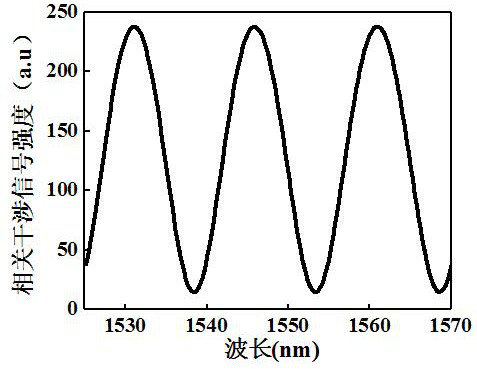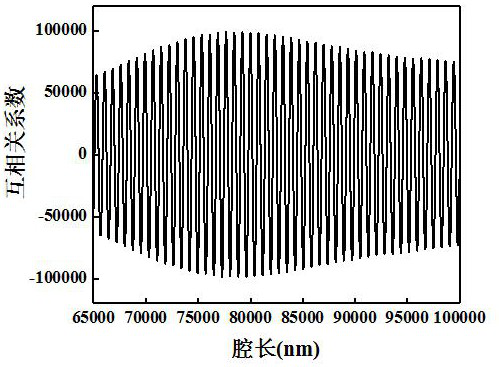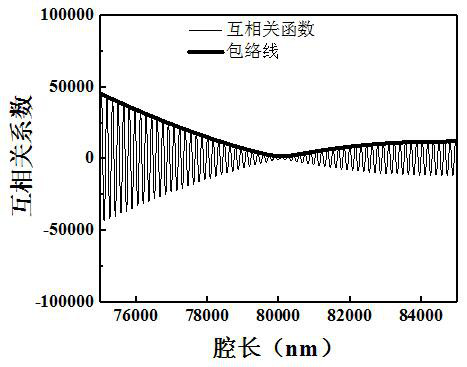A Cavity Length Multiple Frequency Correlation Demodulation Method for Fiber Optic FAP Sensors
A Fa-Per sensor, multi-frequency technology, applied in the direction of using optical devices to transmit sensing components, can solve the problems of inaccurate peak positioning of the cross-correlation function, shorten the spectral measurement range, improve the accuracy, and solve the effect of the fence effect.
- Summary
- Abstract
- Description
- Claims
- Application Information
AI Technical Summary
Problems solved by technology
Method used
Image
Examples
Embodiment
[0035] A cavity length multiple frequency multiplication correlation demodulation method of an optical fiber F-P sensor, the specific steps are as follows:
[0036] Step 1: Collect the reflection spectrum signal of the fiber optic FAPO sensor: the spectrometer collects the reflection spectrum signal of the fiber optic FAPO sensor, and changes the spectral signal coordinate from wavelength λ to frequency v, and the spectral signal is recorded as Y(v);
[0037] Step 2: Single-octave cross-correlation calculation: combine the measured reflection spectrum signal Y(v) with the template function C 0 (v) Do related operations, the template function takes Thus, the single-octave cross-correlation function expression is obtained as:
[0038]
[0039] The related operation results are as Figure 4 As shown, it can be seen that the envelope peak of the cross-correlation function spectrum tends to be flat between 75 μm and 85 μm, and the cavity length value of the single-octave cros...
PUM
 Login to View More
Login to View More Abstract
Description
Claims
Application Information
 Login to View More
Login to View More - R&D
- Intellectual Property
- Life Sciences
- Materials
- Tech Scout
- Unparalleled Data Quality
- Higher Quality Content
- 60% Fewer Hallucinations
Browse by: Latest US Patents, China's latest patents, Technical Efficacy Thesaurus, Application Domain, Technology Topic, Popular Technical Reports.
© 2025 PatSnap. All rights reserved.Legal|Privacy policy|Modern Slavery Act Transparency Statement|Sitemap|About US| Contact US: help@patsnap.com



